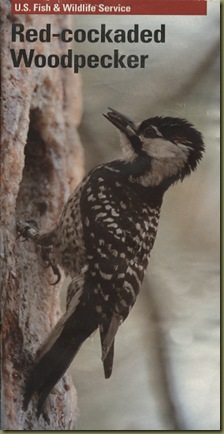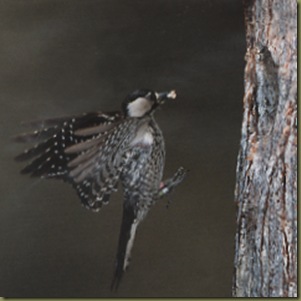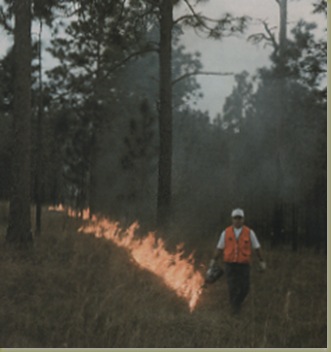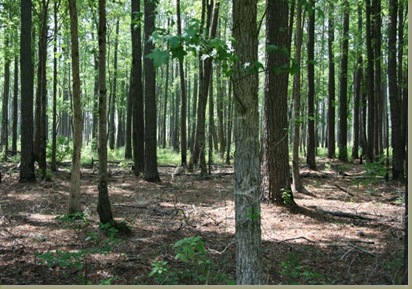Here's a bird I knew very little about until recently spending some time with VDGIF wildlife officials in the Great Dismal Swamp Wildlife Refuge. It's no easy task one official told me, but the refuge is currently working to bring back the red-cockaded woodpecker to where it once lived.
Here's some interesting information on the red-cockaded woodpecker that was provided to me in a brochure put out by the U.S. Fish and Wildlife Service:
The red-cockaded woodpecker (RCW) is about the size of the more popular hairy woodpecker. The RCW is the only North American woodpecker to excavate roost and nest cavities in living pine trees. The longleaf pine is its preferred tree, but has been found to nest in other varieties of pine trees. They prefer large pines and open understory forest. The use of live pines as their choice may have evolved in response to living in a fire maintained ecosystem where frequent fires eliminated most standing dead pines and other understory growth. (Note: live pine trees are somewhat resistant to fire).
The RCWs were once considered common throughout the longleaf pine ecosystem. They inhibited the open pine forest of the southeast from New Jersey all the way to Texas, and north to portions of Oklahoma, Missouri, Tennessee and Kentucky. Over time, the longleaf pine ecosystem slowly disappeared from much of its original range. Early European settlement, commercial tree farming, and agriculture eventually lead to the decline of the RCW habitat, and as a result, the RCW numbers fell as well.
The RCW was listed as endangered in 1970. At the time of listing, the species had declined to a few thousand birds in widely scattered, isolated populations. Today, due to awareness and intervention that number has increased to over 15,00; however, there are certain populations in decline and small populations throughout the species current range that are still in danger of extirpation.
Efforts to bring this bird back has been tough. Today, many souther pine forest are young and have a dense pine/hardwood under-growth. Prescribed burning in pine forest is the most efficient and ecologically beneficial method to accomplish hardwood midstory control.
Although they are in the beginning stages, The Great Dismal Swamp NWR is making an effort to re-establish the RCW. The restoration of thousands of acres are being looked at for potential RCW habitat. Below is a photo I took recently of an area they are working on to make an RCW habitat. Notice the open forest understory that has been created due to prescribed burning.
Its exciting to see and follow the progress of the red-cockaded woodpecker. I hope one day I will have the privilege in seeing one!




No comments:
Post a Comment